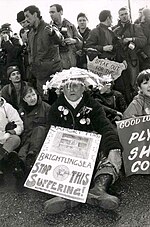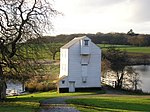Brightlingsea

Brightlingsea () is a coastal town and an electoral ward in the Tendring district of Essex, England. It is situated between Colchester and Clacton-on-Sea, at the mouth of the River Colne, on Brightlingsea Creek. At the 2011 Census, it had a population of 8,076. The town is an active though small port.Its traditional industries included fishery (with a renowned oyster fishery) and shipbuilding. With the decline of these industries, the town is largely a dormitory town for Colchester. Brightlingsea is a limb of Sandwich, one of the Cinque Ports. The town retains an active ceremonial connection with the Cinque Ports, electing a Deputy from a guild of Freemen. Brightlingsea was for many years twinned with French oyster fishery port Marennes, Charente-Maritime, but the relationship fell into disuse. In the mid-1990s, the port of Brightlingsea was used for the export of live animals for slaughter, leading to a protest campaign dubbed The Battle of Brightlingsea.
Excerpt from the Wikipedia article Brightlingsea (License: CC BY-SA 3.0, Authors, Images).Brightlingsea
Back Waterside Lane, Essex
Geographical coordinates (GPS) Address Nearby Places Show on map
Geographical coordinates (GPS)
| Latitude | Longitude |
|---|---|
| N 51.81 ° | E 1.03 ° |
Address
Back Waterside Lane 9
CO7 0EQ Essex, Brightlingsea
England, United Kingdom
Open on Google Maps






